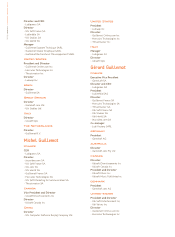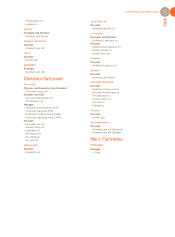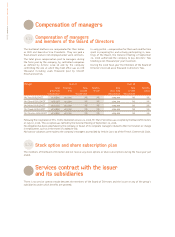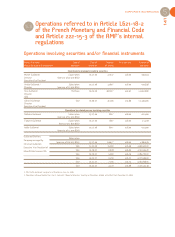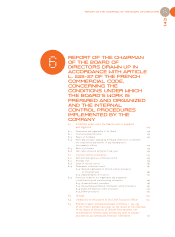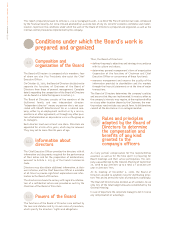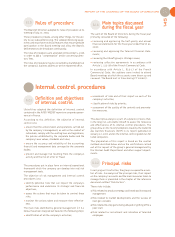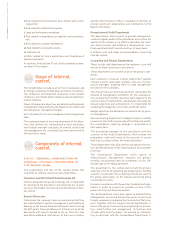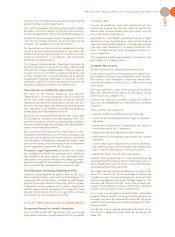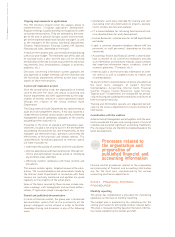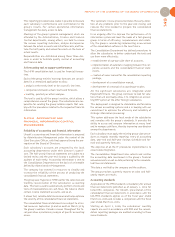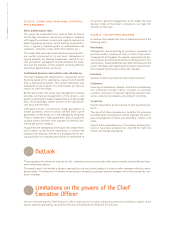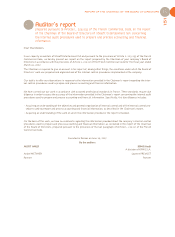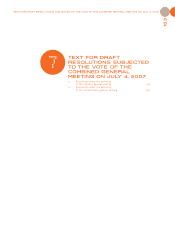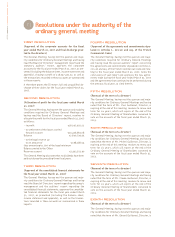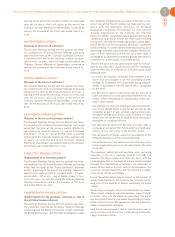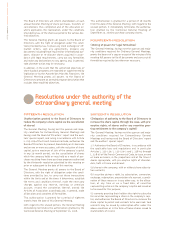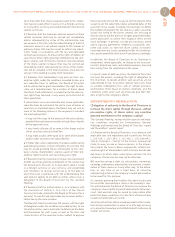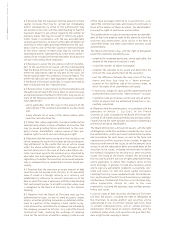Ubisoft 2006 Annual Report Download - page 160
Download and view the complete annual report
Please find page 160 of the 2006 Ubisoft annual report below. You can navigate through the pages in the report by either clicking on the pages listed below, or by using the keyword search tool below to find specific information within the annual report.
UBISOFT • FINANCIAL REPORT 2007
Ongoing improvements to applications
The ITD monitors projects from the analysis phase to
implementation, including application development.
Regular meetings (usually monthly) are organized in order
to monitor these projects. They are attended by the mana-
ger of the area in question (project owner) and the mana-
ger of the implementation team (project manager), as well
as the managers of the various functional departments
(Finance, Administration, Financial Control, HR, Business
Planning and Sales, depending on the topic).
A medium-term project plan was recently developed along
with a two-year budget. The estimated cost of this plan will
be assessed twice a year and the plan will be reviewed
periodically to take into account local priorities and actual
requirements (new developments, changes in priorities,
problems, etc.).
Decisions concerning information system upgrades are
also approved at budget meetings with the Chairman and
the functional departments affected by the most costly
aspects of short-term projects.
A joint self-evaluation project
Since the second half of 2006, the organization of internal
control between the local and group accounting and
finance departments has been supplemented by the orga-
nization of internal control of a more operational nature
through the creation of the Group Internal Audit
Department.
The Group Internal Audit Department has implemented an
audit and risk management process. It has also launched a
comprehensive internal control project aimed at informing
management and all operations managers of this process
and getting them involved in it.
Presented in the form of standard self-evaluation ques-
tionnaires, its goal is not only to assist in the development
and updating of procedures but, more importantly, to help
managers ask themselves basic questions concerning the
effectiveness of the processes and related controls. This
comprehensive, formalized approach to internal control
will make it possible to:
understand the quality of controls at all the subsidiaries,
improve operational and financial practices through cor-
rective and optimization measures aimed at remedying
any problem areas identified,
effectively monitor compliance with these controls and
procedures.
This process entails regular, targeted reviews at the subsi-
diaries. The recommendations and observations made by
the Internal Audit Department in connection with these
reviews are routinely monitored and updates are given
regularly on the progress of the action plans.
Some of the topics covered by these reviews include insu-
rance coverage, cash management and purchase authori-
zations, IT application project management, etc.
Shared and published documentation
In terms of internal control, the group uses a formalized
documentation system that can be accessed by all the
group’s employees via the intranet in order to facilitate
knowledge sharing and discussion in any of the following
areas:
Operations: work areas intended for sharing and com-
municating inter-site information on projects, develop-
ments, studies, business and analyses;
IT: a shared database for retrieving functional and tech-
nical documentation for each development;
Human Resources: a shared area for all HR departments
worldwide;
Legal: a common document database shared with line
personnel or staff personnel, depending on the jobs
concerned;
Accounting, finance and financial control: a shared data-
base accessible to all concerned employees provides
such information as procedures manuals, group contacts
and reporting information (rates, schedules, chart of
accounts, glossaries, IT projects, etc.);
Internal audit: a site that provides information on inter-
nal control as well as targeted access to reports and
recommendations.
To ensure uniform implementation of group procedures at
the local level, managers of support functions
(Consolidation, Accounting, Internal Audit, Financial
Control, Finance, Human Resources, Legal Services,
Taxation and IT Department) are responsible for periodi-
cally reviewing and updating the procedures at all levels of
their functional hierarchy.
Training and information sessions are organized periodi-
cally by the various departments to ensure disclosure of
information.
Coordination with the auditors
Administrative Management works together with the audi-
tors to coordinate the year-end closing process in terms of
schedule and expected significant accounting treatments.
Pre-closing activities are therefore scheduled based on the
latest developments.
Processes related to
the organization and
preparation of
published financial and
accounting information
Internal control procedures related to the preparation
and processing of financial and accounting information
are, for the most part, implemented by the various
accounting and finance departments.
6.2.5.1 Financial Control
procedures
Monthly reporting
The group has implemented a procedure for monitoring
operations on the basis of monthly reporting.
The budget plan is prepared by the subsidiaries for the
coming year based on anticipated product release dates.
This plan is reviewed monthly based on the latest informa-
tion made available by the market and staff.
6.2.5


